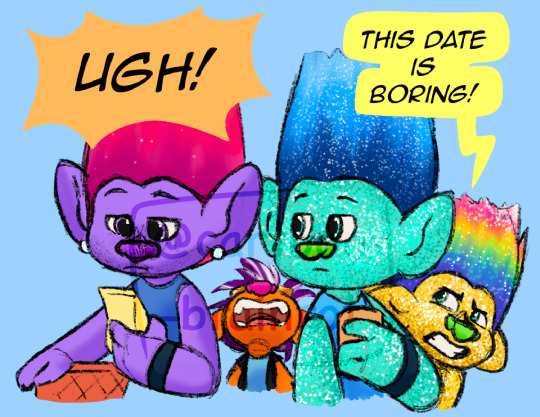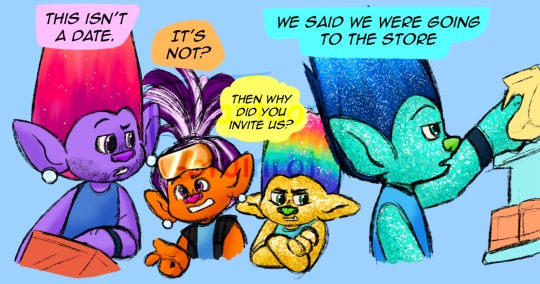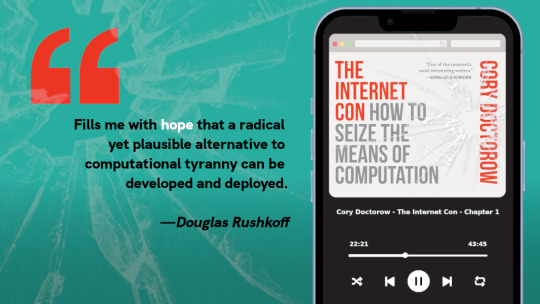#HYPE
Explore tagged Tumblr posts
Text

🪷 "𝐶𝑎𝑟𝑒 𝑡𝑜 𝑓𝑖𝑛𝑑 𝑜𝑢𝑡 𝑓𝑜𝑟 𝑦𝑜𝑢𝑟𝑠𝑒𝑙𝑓?"🌼
Finished just in time for today's episode! I'm repeating myself but after that scene... 🐸
Apothecary nation how we feeling?? ( ͡° ͜ʖ ͡° )
#apothecary diaries#the apothecary diaries#apothecary#kusuriya no hitorigoto#kusuriya anime#maomao#jinshi#jinshi x maomao#ship#frog#this episode is wild#hype#iruno#art#artists on tumblr#illustration#artist#small business#薬屋のひとりごと#kusuriya manga
186 notes
·
View notes
Text
Needy during the flu
seventeen’s hyung line.
genre : crack, funny, fake text, established relationship
tw : mention of body parts, sex talk, course, little bit of angst, mention of disease








#kpop#seventeen#fake texts#svt texts#crack#funny#svt hyungline#hyung#svt#seungcheol#jeonghan#joshua#wen junhui#hoshi#wonwoo#wooji#hype#smut
74 notes
·
View notes
Text

HOLY SHIT THEY LET MEPHILES OUT OF THE SEGA VAULT
#shadow generations#sonic x shadow generations#sonic central#mephiles#mephiles the dark#mild spoilers#shadow the hedgehog#HYPE#AGAIN#I guess Infinite's a slam dunk then
1K notes
·
View notes
Text
What kind of bubble is AI?

My latest column for Locus Magazine is "What Kind of Bubble is AI?" All economic bubbles are hugely destructive, but some of them leave behind wreckage that can be salvaged for useful purposes, while others leave nothing behind but ashes:
https://locusmag.com/2023/12/commentary-cory-doctorow-what-kind-of-bubble-is-ai/
Think about some 21st century bubbles. The dotcom bubble was a terrible tragedy, one that drained the coffers of pension funds and other institutional investors and wiped out retail investors who were gulled by Superbowl Ads. But there was a lot left behind after the dotcoms were wiped out: cheap servers, office furniture and space, but far more importantly, a generation of young people who'd been trained as web makers, leaving nontechnical degree programs to learn HTML, perl and python. This created a whole cohort of technologists from non-technical backgrounds, a first in technological history. Many of these people became the vanguard of a more inclusive and humane tech development movement, and they were able to make interesting and useful services and products in an environment where raw materials – compute, bandwidth, space and talent – were available at firesale prices.
Contrast this with the crypto bubble. It, too, destroyed the fortunes of institutional and individual investors through fraud and Superbowl Ads. It, too, lured in nontechnical people to learn esoteric disciplines at investor expense. But apart from a smattering of Rust programmers, the main residue of crypto is bad digital art and worse Austrian economics.
Or think of Worldcom vs Enron. Both bubbles were built on pure fraud, but Enron's fraud left nothing behind but a string of suspicious deaths. By contrast, Worldcom's fraud was a Big Store con that required laying a ton of fiber that is still in the ground to this day, and is being bought and used at pennies on the dollar.
AI is definitely a bubble. As I write in the column, if you fly into SFO and rent a car and drive north to San Francisco or south to Silicon Valley, every single billboard is advertising an "AI" startup, many of which are not even using anything that can be remotely characterized as AI. That's amazing, considering what a meaningless buzzword AI already is.
So which kind of bubble is AI? When it pops, will something useful be left behind, or will it go away altogether? To be sure, there's a legion of technologists who are learning Tensorflow and Pytorch. These nominally open source tools are bound, respectively, to Google and Facebook's AI environments:
https://pluralistic.net/2023/08/18/openwashing/#you-keep-using-that-word-i-do-not-think-it-means-what-you-think-it-means
But if those environments go away, those programming skills become a lot less useful. Live, large-scale Big Tech AI projects are shockingly expensive to run. Some of their costs are fixed – collecting, labeling and processing training data – but the running costs for each query are prodigious. There's a massive primary energy bill for the servers, a nearly as large energy bill for the chillers, and a titanic wage bill for the specialized technical staff involved.
Once investor subsidies dry up, will the real-world, non-hyperbolic applications for AI be enough to cover these running costs? AI applications can be plotted on a 2X2 grid whose axes are "value" (how much customers will pay for them) and "risk tolerance" (how perfect the product needs to be).
Charging teenaged D&D players $10 month for an image generator that creates epic illustrations of their characters fighting monsters is low value and very risk tolerant (teenagers aren't overly worried about six-fingered swordspeople with three pupils in each eye). Charging scammy spamfarms $500/month for a text generator that spits out dull, search-algorithm-pleasing narratives to appear over recipes is likewise low-value and highly risk tolerant (your customer doesn't care if the text is nonsense). Charging visually impaired people $100 month for an app that plays a text-to-speech description of anything they point their cameras at is low-value and moderately risk tolerant ("that's your blue shirt" when it's green is not a big deal, while "the street is safe to cross" when it's not is a much bigger one).
Morganstanley doesn't talk about the trillions the AI industry will be worth some day because of these applications. These are just spinoffs from the main event, a collection of extremely high-value applications. Think of self-driving cars or radiology bots that analyze chest x-rays and characterize masses as cancerous or noncancerous.
These are high value – but only if they are also risk-tolerant. The pitch for self-driving cars is "fire most drivers and replace them with 'humans in the loop' who intervene at critical junctures." That's the risk-tolerant version of self-driving cars, and it's a failure. More than $100b has been incinerated chasing self-driving cars, and cars are nowhere near driving themselves:
https://pluralistic.net/2022/10/09/herbies-revenge/#100-billion-here-100-billion-there-pretty-soon-youre-talking-real-money
Quite the reverse, in fact. Cruise was just forced to quit the field after one of their cars maimed a woman – a pedestrian who had not opted into being part of a high-risk AI experiment – and dragged her body 20 feet through the streets of San Francisco. Afterwards, it emerged that Cruise had replaced the single low-waged driver who would normally be paid to operate a taxi with 1.5 high-waged skilled technicians who remotely oversaw each of its vehicles:
https://www.nytimes.com/2023/11/03/technology/cruise-general-motors-self-driving-cars.html
The self-driving pitch isn't that your car will correct your own human errors (like an alarm that sounds when you activate your turn signal while someone is in your blind-spot). Self-driving isn't about using automation to augment human skill – it's about replacing humans. There's no business case for spending hundreds of billions on better safety systems for cars (there's a human case for it, though!). The only way the price-tag justifies itself is if paid drivers can be fired and replaced with software that costs less than their wages.
What about radiologists? Radiologists certainly make mistakes from time to time, and if there's a computer vision system that makes different mistakes than the sort that humans make, they could be a cheap way of generating second opinions that trigger re-examination by a human radiologist. But no AI investor thinks their return will come from selling hospitals that reduce the number of X-rays each radiologist processes every day, as a second-opinion-generating system would. Rather, the value of AI radiologists comes from firing most of your human radiologists and replacing them with software whose judgments are cursorily double-checked by a human whose "automation blindness" will turn them into an OK-button-mashing automaton:
https://pluralistic.net/2023/08/23/automation-blindness/#humans-in-the-loop
The profit-generating pitch for high-value AI applications lies in creating "reverse centaurs": humans who serve as appendages for automation that operates at a speed and scale that is unrelated to the capacity or needs of the worker:
https://pluralistic.net/2022/04/17/revenge-of-the-chickenized-reverse-centaurs/
But unless these high-value applications are intrinsically risk-tolerant, they are poor candidates for automation. Cruise was able to nonconsensually enlist the population of San Francisco in an experimental murderbot development program thanks to the vast sums of money sloshing around the industry. Some of this money funds the inevitabilist narrative that self-driving cars are coming, it's only a matter of when, not if, and so SF had better get in the autonomous vehicle or get run over by the forces of history.
Once the bubble pops (all bubbles pop), AI applications will have to rise or fall on their actual merits, not their promise. The odds are stacked against the long-term survival of high-value, risk-intolerant AI applications.
The problem for AI is that while there are a lot of risk-tolerant applications, they're almost all low-value; while nearly all the high-value applications are risk-intolerant. Once AI has to be profitable – once investors withdraw their subsidies from money-losing ventures – the risk-tolerant applications need to be sufficient to run those tremendously expensive servers in those brutally expensive data-centers tended by exceptionally expensive technical workers.
If they aren't, then the business case for running those servers goes away, and so do the servers – and so do all those risk-tolerant, low-value applications. It doesn't matter if helping blind people make sense of their surroundings is socially beneficial. It doesn't matter if teenaged gamers love their epic character art. It doesn't even matter how horny scammers are for generating AI nonsense SEO websites:
https://twitter.com/jakezward/status/1728032634037567509
These applications are all riding on the coattails of the big AI models that are being built and operated at a loss in order to be profitable. If they remain unprofitable long enough, the private sector will no longer pay to operate them.
Now, there are smaller models, models that stand alone and run on commodity hardware. These would persist even after the AI bubble bursts, because most of their costs are setup costs that have already been borne by the well-funded companies who created them. These models are limited, of course, though the communities that have formed around them have pushed those limits in surprising ways, far beyond their original manufacturers' beliefs about their capacity. These communities will continue to push those limits for as long as they find the models useful.
These standalone, "toy" models are derived from the big models, though. When the AI bubble bursts and the private sector no longer subsidizes mass-scale model creation, it will cease to spin out more sophisticated models that run on commodity hardware (it's possible that Federated learning and other techniques for spreading out the work of making large-scale models will fill the gap).
So what kind of bubble is the AI bubble? What will we salvage from its wreckage? Perhaps the communities who've invested in becoming experts in Pytorch and Tensorflow will wrestle them away from their corporate masters and make them generally useful. Certainly, a lot of people will have gained skills in applying statistical techniques.
But there will also be a lot of unsalvageable wreckage. As big AI models get integrated into the processes of the productive economy, AI becomes a source of systemic risk. The only thing worse than having an automated process that is rendered dangerous or erratic based on AI integration is to have that process fail entirely because the AI suddenly disappeared, a collapse that is too precipitous for former AI customers to engineer a soft landing for their systems.
This is a blind spot in our policymakers debates about AI. The smart policymakers are asking questions about fairness, algorithmic bias, and fraud. The foolish policymakers are ensnared in fantasies about "AI safety," AKA "Will the chatbot become a superintelligence that turns the whole human race into paperclips?"
https://pluralistic.net/2023/11/27/10-types-of-people/#taking-up-a-lot-of-space
But no one is asking, "What will we do if" – when – "the AI bubble pops and most of this stuff disappears overnight?"

If you'd like an essay-formatted version of this post to read or share, here's a link to it on pluralistic.net, my surveillance-free, ad-free, tracker-free blog:
https://pluralistic.net/2023/12/19/bubblenomics/#pop

Image: Cryteria (modified) https://commons.wikimedia.org/wiki/File:HAL9000.svg
CC BY 3.0 https://creativecommons.org/licenses/by/3.0/deed.en
--
tom_bullock (modified) https://www.flickr.com/photos/tombullock/25173469495/
CC BY 2.0 https://creativecommons.org/licenses/by/2.0/
4K notes
·
View notes
Text
We are at most three weeks away from another big reveal, you guys! One that I have been trying to make happen for years and years. Get hyped!
#vagueblr#watch this space#the final frontier#these are the voyages of the starship science#et cetera#hype
793 notes
·
View notes
Text
detective conan movie 27 predictions (real) (confirmed)
2K notes
·
View notes
Text
ADOPTS IMMEDIATELY

THIS THING IS SO COOL WHAT
Meet Yarnaby, the presumed chapter 4 villain!!
Here’s my attempt at the silly guy:

#poppy playtime#poppy playtime chapter 4#HYPE#yarnaby#official poppy playtime art#also fanart#art#artists on tumblr
465 notes
·
View notes
Text
I know it's way too early to start thinking this far ahead, but I just can't help it...



#transformers one#trilogy#transformers#hasbro#paramount#optimus prime#megatron#bumblebee#elita-1#quintessons#autobots#decepticons#animation#logos#concept#fanart#fan logos#hype
717 notes
·
View notes
Note
THE KURO HIATUS IS OVER, I REPEAT, THE KURO HIATUS IS OVER

WE'RE SO BACK
198 notes
·
View notes
Text




Guess who had the time to finally watch Trolls Band Together and was dragged back into their Trolls hyper-fixation

#trolls#trolls dreamworks#trolls ablaze#trolls hype#trolls boom#trolls trickee#trolls band together#ablaze#hype#trickee#boom#incorrect quotes#my art#trolls art#trolls kismet
1K notes
·
View notes
Text

I'm bit early for Diamond boy's birthday but hey, better get on the #hypetrain ! : DD And I'm continuing my journey to learn Live2D ^^
#digital art#digital painting#artists on tumblr#animated emote#hype#twisted wonderland#cater diamond#twst cater#cater twst#fanart#twst fanart#emote#custom emote#live2d#live2d emote
221 notes
·
View notes
Text

all the cool kids know these guys
#dandadan#dandadan manga#dandadan anime#momo ayase#takakura ken#okarun#jiji#aira shiratori#anime#manga#kinta#rin sawaki#seiko ayase#unji zuma#vamola#mr mantis shrimp#serpo#turbo granny#do it for them#peak#hype#goat#animanga#dailymanga
360 notes
·
View notes
Text
Video description under the cut!
[VIDEO DESCRIPTION] The background is the ocean with crashing waves as dark clouds roll in from overhead. In the foreground we see a deep blue-green tricorne hat in profile, seated on an algae-covered rock decorated with seaweed, seashells, coral, and pearls. The ambient audio is crashing waves, a low strong wind, and tonal percussion played with mallets. The hat and its seaweed are being shifted and rippled in the strong wind blowing in clouds until the hat is finally off the rock and across the water, crossing from left to right. The hat is suddenly stopped by something offscreen despite the continued wind and the music, ambient noise sharply fades. There is a moment of silence before strong percussive drums creating a sense of excitement begin and we zoom out to reveal the hat was caught by a dragon with deep dark blue scales. But we only see their forelimb and what appears to be a cloak before the video windmill transitions to the Flight Rising logo that reveals the date Saturday June 8, 2024. Additional overlaid text reads Scheduled Maintenance 04:00-06:00 server time and Anniversary Event Begins 06:00 server time.
#Flight Rising#FlightRising#Dragon#Dragons#Video#Teaser#Anniversary#Virtual Pet#Scheduled Maintenance#HYPE
412 notes
·
View notes
Text
Studio execs love plausible sentence generators because they have a workflow that looks exactly like a writer-exec dynamic, only without any eye-rolling at the stupid “notes” the exec gives the writer.
All an exec wants is to bark out “Hey, nerd, make me another E.T., except make the hero a dog, and set it on Mars.” After the writer faithfully produces this script, the exec can say, ���OK, put put a love interest in the second act, and give me a big gunfight at the climax,” and the writer dutifully makes the changes.
This is exactly how prompting an LLM works.
A writer and a studio exec are lost in the desert, dying of thirst.
Just as they are about to perish, they come upon an oasis, with a cool sparkling pool of water.
The writer drops to their knees and thanks the fates for saving their lives.
But then, the studio exec unzips his pants, pulls out his cock and starts pissing in the water.
“What the fuck are you doing?” the writer demands.
“Don’t worry,” the exec says, “I’m making it better.”
- Everything Made By an AI Is In the Public Domain: The US Copyright Office offers creative workers a powerful labor protective


THIS IS THE LAST DAY FOR MY KICKSTARTER for the audiobook for "The Internet Con: How To Seize the Means of Computation," a Big Tech disassembly manual to disenshittify the web and make a new, good internet to succeed the old, good internet. It's a DRM-free book, which means Audible won't carry it, so this crowdfunder is essential. Back now to get the audio, Verso hardcover and ebook:
http://seizethemeansofcomputation.org

Going to Burning Man? Catch me on Tuesday at 2:40pm on the Center Camp Stage for a talk about enshittification and how to reverse it; on Wednesday at noon, I'm hosting Dr Patrick Ball at Liminal Labs (6:15/F) for a talk on using statistics to prove high-level culpability in the recruitment of child soldiers.
On September 6 at 7pm, I'll be hosting Naomi Klein at the LA Public Library for the launch of Doppelganger.
On September 12 at 7pm, I'll be at Toronto's Another Story Bookshop with my new book The Internet Con: How to Seize the Means of Computation.
#labor#copyright#public domain#ai#creative workers#hype#criti-hype#enshittification#llcs with mfas#solidarity#collective power
2K notes
·
View notes
Text

They just dropped Maria's and Eggman's father's and left.
#I want this diary so much nothing normal about it#hype#sonic the hedgehog#gerald robotnik#ivo robotnik#maria robotnik#project shadow#shadow#shadow the hedgehog#sonic x shadow generations#shadow generations#space colony ark#sth
247 notes
·
View notes